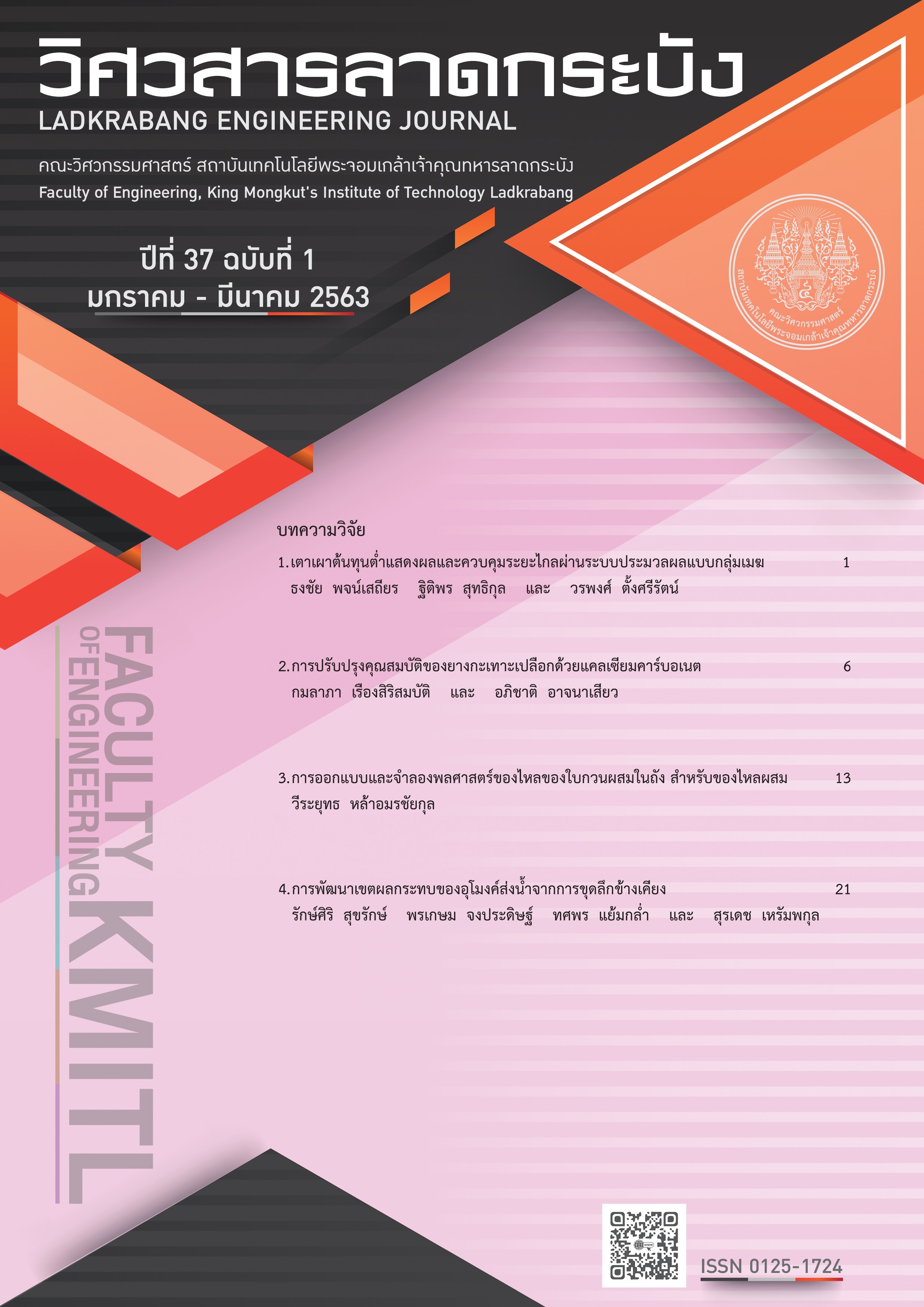Low Cost Furnace for Monitoring and Control via Remote Wireless Network in Cloud Service
Keywords:
Low Cost Furnace, Remote Control via Wireless Network, Cloud ServiceAbstract
The objective of this work improve a Low Cost furnace used in a laboratory in order to solve the limitations of high price and purchased furnace, unable remote monitor and control. The furnace use in prepare many materials and catalysts by several calcination steps and long operating time requirement (15-20 hours at least). Its step order and temperature were displayed only on a furnace screen that was inconvenient for a user waited for a long time until all steps finished. Therefore, remote wireless network in cloud service was applied to the furnace for monitoring its status and temperature through a computer, tapeless, or smart phone via internet network. In practical, real-time data monitoring displayed efficiently on the personal devices. The operating system could be controlled and the temperature was able to reset via remote wireless network in cloud service by commanding from the devices.
References
D. Kim, Y. Lee, Yonghwi Kim, K. Mingle, J. Lauterbach, D.A. Blom, T. Vogt and Y. Lee, “Ethylene Epoxidation Catalyzed by Ag Nanoparticles on Ag-LSX Zeolites formed by Pressure- and Temperature-Induced Auto-Reduction,” Chemistry - A European Journal, Vol.24, No.5, pp. 1041-1045, Jan., 2018.
J.E. van den Reijen, S. Kanungo, T.A.J. Welling, M. Versluijs-Helder, T.A. Nijhuis, K.P. de Jong and P.E. de Jongh, “Preparation and particle size effects of Ag-Al2O3 catalysts for ethylene epoxidation,” Journal of Catalysis, Vol.356, pp. 65-74, Nov., 2017.
H. Wang, J. Hana, B. Zhao, L. Qin, Y. Wang and F. Yu, “Non-thermal plasma enhanced dry reforming of CH4 with CO2 over activated carbon supported Ni catalysts,” Molecular Catalysis, Vol.475, pp. 110486, June, 2019.
S. Sandesh, G. Shanbhag and A. Bhimarao Halgeri, “Transesterification of Glycerol to Glycerol Carbonate Using KF/Al2O3 Catalyst: The Role of Support and Basicity,” Catalysis Letters, Vol.143, No.11, pp. 1226-1234, June, 2013.
N.A. Khan, E.M. Kennedy, B.Z. Dlugogorski, A.A. Adesina and M. Stockenhuber, “Partial oxidation of methane with nitrous oxide forms synthesis gas over cobalt exchanged ZSM-5,” Catalysis Communications, Vol.53, pp. 42-46, April, 2014.
M. Logan, M. Safi, P. Lens and C. Visvanathan, “Investigating the performance of internet of things based anaerobic digestion of food waste,” Process Safety and Environmental Protection, Vol.127, pp. 277-287, May, 2019.
H. He, T. Zhao, H. Guan, T. Zhong, H. Zeng, L. Xing, Y. Zhang and X. Xue, “A water-evaporation-induced self-charging hybrid power unit for application in the Internet of Things,” Science Bulletin, Vol.64, No.19, pp. 1409-1417, June, 2019.
I. Merelli, L. Morganti, E. Corni, C. Pellegrino, D. Cesini, L. Roverelli, G. Zereik and D. D’Agostino, “Low-power portable devices for metagenomics analysis: Fog computing makes bioinformatics ready for the Internet of Things,” Future Generation Computer Systems, Vol.88, pp. 467-478, May, 2018.
K. Alexopoulos, S. Koukas, N. Boli and D. Mourtzis, “Architecture and development of an Industrial Internet of Things framework for realizing services in Industrial Product Service Systems,” Procedia CIRP, Vol.72, pp. 880-885, 2018.
J. Yang, C. Wang, Q. Zhao, B. Jiang, Z. Lv and A.K. Sangaiah, “Marine surveying and mapping system based on Cloud Computing and Internet of Things,” Future Generation Computer Systems, Vol. 85, pp. 39-50, Feb., 2018.
X. Zhao, Z. Kang, Q. Liao, Z. Zhang, M. Ma, Q. Zhang and Y. Zhang, “Ultralight, self-powered and self-adaptive motion sensor based on triboelectric nanogenerator for perceptual layer application in Internet of things,” Vol.48, pp. 312-319, March, 2018.
Downloads
Published
How to Cite
Issue
Section
License

This work is licensed under a Creative Commons Attribution-NonCommercial-NoDerivatives 4.0 International License.
The published articles are copyrighted by the School of Engineering, King Mongkut's Institute of Technology Ladkrabang.
The statements contained in each article in this academic journal are the personal opinions of each author and are not related to King Mongkut's Institute of Technology Ladkrabang and other faculty members in the institute.
Responsibility for all elements of each article belongs to each author; If there are any mistakes, each author is solely responsible for his own articles.






